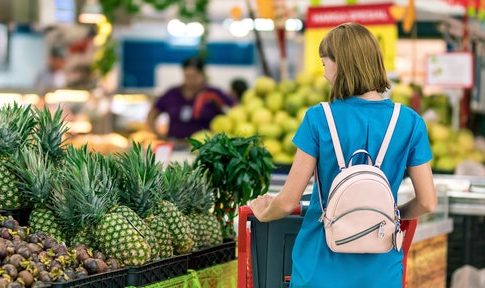Mercatus, a leading provider in digital commerce solutions for grocery retail, today announced findings published in “eGrocery’s New Reality: The Pandemic’s Lasting Impact on U.S. Grocery Shopping Behavior,” a survey of nearly 60,000 American shoppers across every region in the country conducted in collaboration with research and insights firm Incisiv. The survey found that online grocery will account for 21.5% of total grocery sales by 2025 – an estimated $250 billion, which is more than a 60% increase over pre-pandemic estimates.
The comprehensive research report is a barometer of the dramatic changes in consumer behavior and preferences during the coronavirus pandemic, and provides prescriptive guidance to retail leaders across the grocery industry. While 40% of online shoppers are likely or very likely to continue to purchase via online channels, 78% of all shoppers still prefer to visit a brick-and-mortar grocery store either to shop in store or for curbside pickup. Despite the high growth in online adoption, most grocery shoppers still profess loyalty to retailers and online brands that have a physical store presence. Post-pandemic success will go to those retailers who can best bridge both online and offline shopping journeys and provide a seamless experience with minimal friction points.
During shelter-in-place norms created by the pandemic, 30% of shoppers changed their preferred shopping destination. Of these shoppers, 60% have moved from one brick-and-mortar store to another, and 40% shifted to other online shopping options. The traditional drivers of preference (proximity/location, value, product quality and convenience) have not changed during the pandemic. However, during this time, shoppers have been less price sensitive as product availability has taken precedence. Lack of product availability (56%) and concerns over safety protocols (33%) were the biggest reasons for customers shopping elsewhere.
“With close to 60,000 respondents across the U.S., we analyzed more than 48 million data points and found that shoppers are highly satisfied and loyal to their preferred grocery store, but this loyalty does not extend to the online channel,” said Amar Mokha, COO and benchmarking lead, Incisiv. “While the adoption rate of online grocery has increased significantly, grocers need to improve pickup and delivery slot availability, promotion and coupon availability, and product substitutions to improve customer loyalty online.”
Online grocery’s growth has rapidly accelerated during the pandemic with 43% of shoppers having shopped online in the last six months compared to 24% just two years ago. The top three reasons shoppers have shifted to online shopping are COVID-19 concerns (62%), convenience (62%) and time savings (42%). Additionally, 66% of all respondents who shop online rate real-time inventory visibility as very important. Compared to brick and mortar, there is far less loyalty for pure-play online retailers with only 8% of shoppers switching to an online-only operator such as Amazon.
Another key insight from the report identifies a significant and likely long-lasting demographic shift in terms of who is buying online groceries. Older population groups (45 years and older) have made the most dramatic shifts to online shopping with 46% adopting a new fulfillment method (e.g. curbside) and 35% ordering groceries online for the first time. Grocery retail brands have an opportunity to retain these new online customers, provided the experience matches up with shopper expectations.
“This comprehensive survey proves that COVID-19 has fundamentally changed the way shoppers approach their grocery options – so much so that we now expect to see online sales reach an unprecedented $250 billion by 2025,” said Sylvain Perrier, president and CEO, Mercatus. “The growth of online grocery in 2020 and its predicted long-term impact, coupled with customers’ continued loyalty to brick and mortar, makes it clear that these avenues must complement each other in creating a great customer experience across a grocer’s entire brand. In order to round out the loyalty to online channels, this data makes it clear that brands should make investments in digital functionality, especially regarding product search, discovery and product information.”





